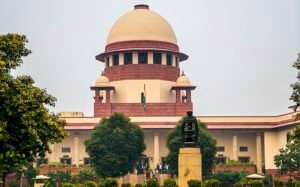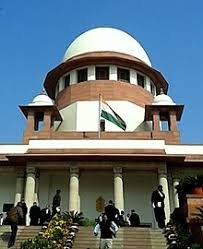The High Court Administration proposed the construction of an additional verandah in front of Court Room No. 1, similar to existing verandahs in front of Court Rooms No. 2 to 7, to address a severe shortage of parking space. The existing underground multi-level parking, with three tiers, can only accommodate approximately 300 vehicles, while 2000 to 3000 four-wheeler vehicles visit the High Court daily during working sessions. This forces most vehicles to park in open areas, exposing lawyers, litigants, and officials to sun, winds, and rain, causing significant inconvenience and affecting the court’s functioning. The proposed verandah was envisioned to provide protection from the elements and facilitate parking.
Opponents, including some litigants and the learned Solicitor General, argued that the proposed construction could jeopardise the World Heritage status of the Chandigarh Capitol Complex, which includes the High Court Building. Concerns were raised about potential irreversible alteration to the aesthetic value and structure of the building, and the elimination of the “green belt” area. The Chief Justice had previously, in 2008, turned down a proposal for a multi-level parking facility due to concerns about disturbance to court work.
Law Involved
The core legal framework revolves around the Chandigarh Capitol Complex’s designation as a UNESCO World Heritage Site in 2016, specifically under the “Architectural Work of Le Corbusier” nomination. This status imposes obligations to preserve its Outstanding Universal Value (OUV). Crucially, the “Operational Guidelines for the Implementation of the World Heritage Convention,” particularly Paragraph 172, mandates that States Parties must inform the World Heritage Committee of any major restoration or new construction that might affect the OUV of a site, and obtain their concurrence.
Additionally, the case involved a Public Interest Litigation (PIL), a legal mechanism allowing the court to address matters of public concern. The court’s jurisdiction for intervention stems from Article 226 of the Constitution of India. The Master Plan of Chandigarh also played a role in the discussions, particularly regarding land use.
Reasoning
The High Court considered various aspects to reach its decision:
Necessity vs. Preservation: The court acknowledged the “dire need” for parking space and shelter for users. It stated that the High Court Administration is obligated to provide appropriate facilities for lawyers, litigants, and officials.
Impact on World Heritage Status: A central point of contention was whether the proposed verandah constituted a “major restoration” or “new construction” that would adversely affect the OUV. The court, having considered expert opinions and previous submissions, concluded that the proposed verandah, being “exactly identical” to the existing ones in front of Court Room No. 2 to 7, would not violate Paragraph 172 of the Operational Guidelines and would not have an adverse impact on the World Heritage status. It viewed this as a minor addition rather than a major alteration.
“Living Heritage” Concept: The court adopted a balanced approach, considering the High Court building as a “living heritage” that must cater to the present-day functional requirements while preserving its heritage. It affirmed that the High Court, as a functional entity, cannot have its operations hampered by a lack of basic facilities.
Green Cover and Environmental Balance: While allowing construction, the court strongly emphasised the importance of green cover. It had previously directed the laying of “green pavers” and planting trees in the open parking area to allow water percolation and restore green cover. The court stressed that the additional verandah should incorporate sufficient trees planted at regular intervals to ensure continued green cover and shade, enhancing the overall ecological balance of the area.
Consultation and Expert Opinion: The court noted that the administration had initiated consultation with the Foundation Le Corbusier for required drawings. It also considered the administration’s past efforts to procure expert opinions from bodies like the Department of Urban Planning and the Indian Institute of Technology.
Holding
The High Court dismissed the applications seeking to recall or stay its earlier orders dated 22.02.2023 and 23.02.2023, which allowed the laying of “green pavers” and planting of trees for parking.
The court upheld its decision to permit the construction of the verandah in front of Court Room No. 1, aligning its design with the existing verandahs in front of Court Room Nos. 2 to 7. It explicitly stated that this construction does not warrant interference with the impugned orders.
Furthermore, the High Court directed its Administration to:
Consult with landscaping experts, such as the Council of Architecture and the Chandigarh Heritage Conservation Committee, to ensure the planting of an appropriate number of trees at reasonable intervals to maximise green cover and provide shade for parked vehicles.
Continue its engagement with the Foundation Le Corbusier for the necessary drawing plans related to the project.
This judgment seeks to create a “just balance” between the architectural heritage of the building and the practical needs of a functioning court, ensuring sustainable development.
Chandigarh Administration V. Registrar General, High Court Of Punjab And Haryana, Chandigarh And Others
Supreme Court: 2025 INSC 786: (DoJ 28-05-2025)








